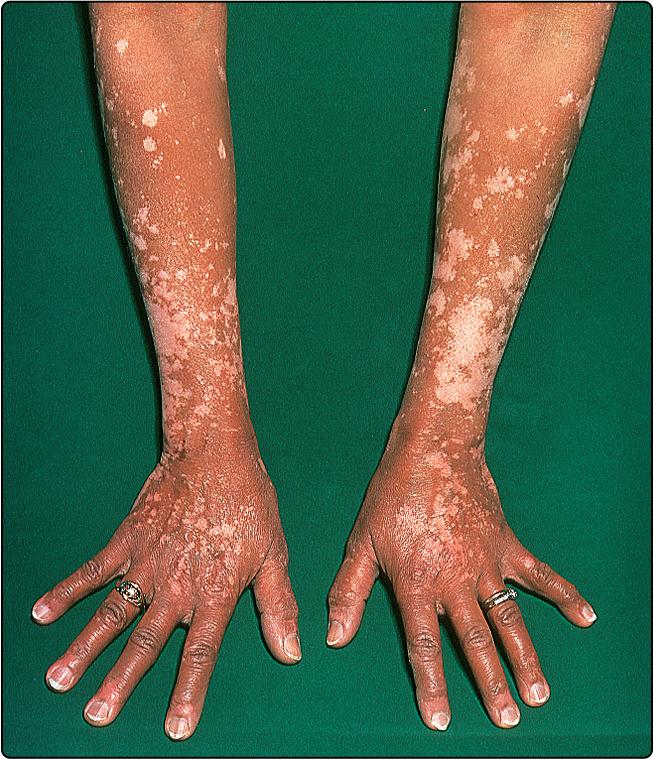Physical Address
304 North Cardinal St.
Dorchester Center, MA 02124
Skin colour is due to a mixture of the pigments melanin (p. 8), oxyhaemoglobin (in blood) and carotene (in the stratum corneum and subcutaneous fat). Pigmentary diseases are common and particularly distressing to those with darker skin. Disorders of pigmentation mainly involve melanocytes, but other causes are mentioned where relevant.
Pigment loss may be generalized or patchy. Generalized hypopigmentation occurs with albinism, phenylketonuria and hypopituitarism; patchy loss is seen in vitiligo, after inflammation, following exposure to some chemicals and with certain infections ( Table 42.1 ).
| Cause | Example |
|---|---|
| Chemical | Substituted phenols, hydroquinone |
| Endocrine | Hypopituitarism |
| Genetic | Albinism, phenylketonuria, tuberous sclerosis, piebaldism |
| Infection | Leprosy, yaws, pityriasis versicolor |
| Post-inflammatory | Cryotherapy, eczema, psoriasis, morphoea, pityriasis alba |
| Other | Vitiligo, lichen sclerosus, halo naevus, scarring |
Vitiligo is an acquired idiopathic disorder showing white non-scaly macules. The association with thyroid disease, pernicious anaemia and Addison’s disease suggests an autoimmune aetiology in some cases. Thyroid function should be checked. About 30% of patients give a family history of the disorder. Melanocytes are absent from affected skin on histology.
Vitiligo affects 0.5% of the population, is seen in all races and is most troublesome in those with a dark skin. The sex incidence is equal, and the onset, usually between 10 and 30 years of age, may be precipitated by injury or sunburn. The sharply defined white macules are often symmetrical ( Fig. 42.1 ). The hands, wrists, knees, neck and areas around orifices (e.g. the mouth) are frequently affected. Occasionally, vitiligo is segmental (e.g. down an arm), generalized or universal. The course is unpredictable; areas may remain static, spread or (infrequently) repigment. Vitiligo can have a profound psychological effect on those affected. In light-skinned individuals, vitiligo may be discernible only in summer, when the non-vitiliginous areas become sun-tanned.

Post-inflammatory hypopigmentation is often accompanied by other skin changes ( Table 42.1 ). In chemical leucoderma, a history of exposure to phenolic chemicals should be sought. The hypopigmented macules of leprosy are normally anaesthetic.
Become a Clinical Tree membership for Full access and enjoy Unlimited articles
If you are a member. Log in here